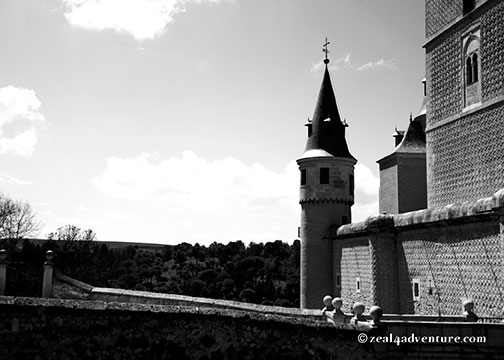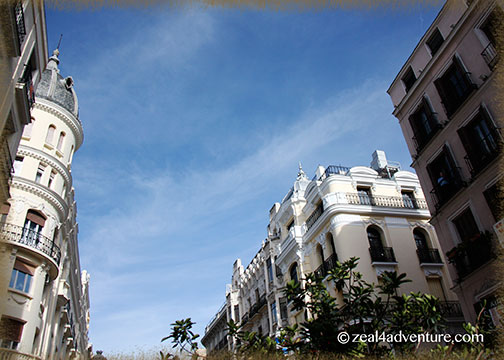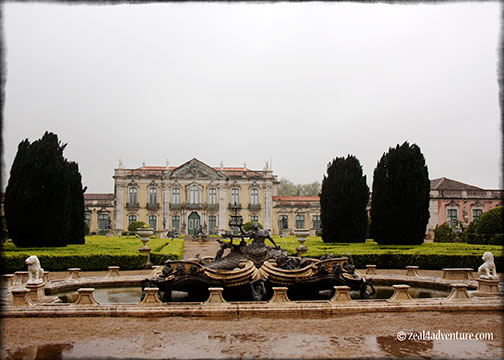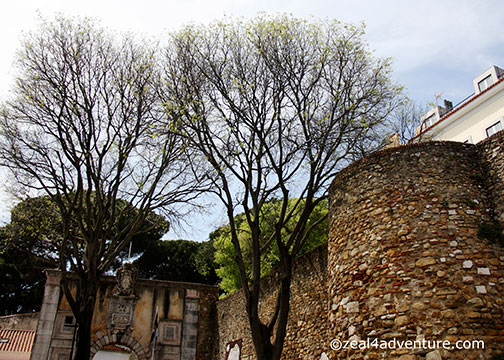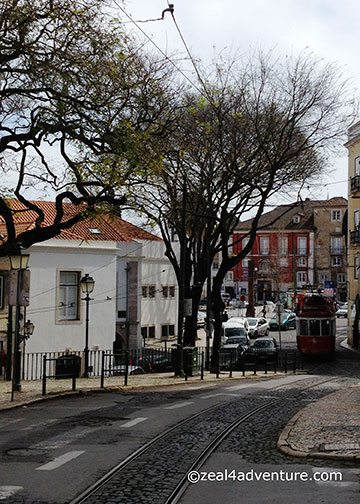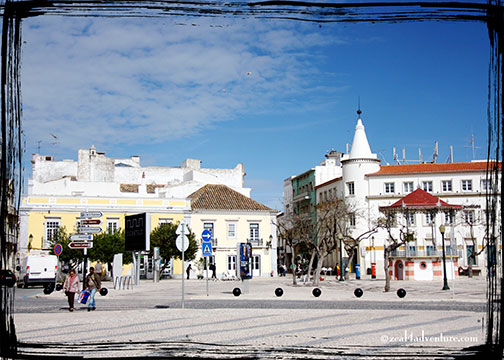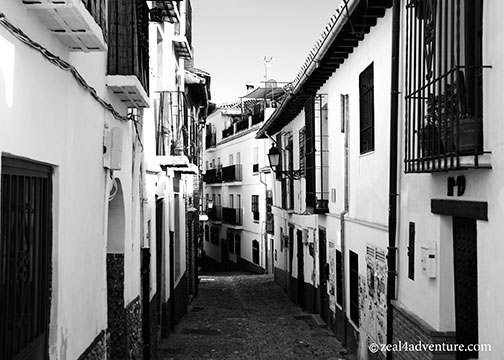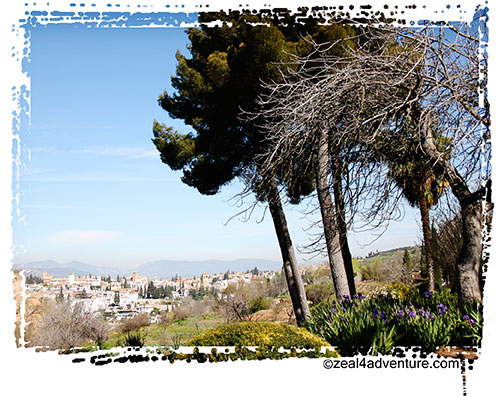 Credits: Quickpage from 4EVER kit by Sarah H.
Credits: Quickpage from 4EVER kit by Sarah H.
Not as famous a cuisine in my part of the world, my first encounter with Portuguese cuisine was in Macau. Technically, what I had was Macanese food—more like a mix of Portuguese and Chinese with influences from cuisines of other Portuguese speaking nations but this sparked an interest in Portugal (and of course its cuisine).
So we made our way there last year. Little did we know that this land offers more than just an awesome cuisine but boasts of picturesque landscapes, colorful cityscapes as well as a rich history.

The primary goal, however, is to delve deeper into its cuisine. And as soon as we arrived in Lisbon, we immediately solicited advice on where to find authentic Portuguese restaurants around the city.

And thanks to Hossein, we found our way to some unforgettable good eats even though eateries catering more to the tourist crowd dominated the area near his hostel.
Portugal’s colonial possessions influenced the use of spices and ingredients that are today widely used in their cuisines such as chilies from Angola called piri-piri, black pepper, as well as cinnamon, vanilla and saffron. The result is rustic and robust, often described as peasant food. Portuguese restaurants run a broad spectrum from rustic eateries to fancy hotspots.
Lisbon has left an indelible impression on me and a lot of it had to do with the food. Here’s why I know I’ll be back.
Chicken Piri Piri at Bonjardim

Chicken Piri Piri. One of Portuguese’s simple pleasures. This chicken is roast to perfection with a blend of potent small chili peppers. Top on our list, the first thing we did was head to this unpretentious eatery where locals go for the charred and plump piri-piri spiced roast chicken.

Just within walking distance from the hostel, in a side street east of Praca Restauradores is Bonjardim Cervejaria.
On a rainy day, it was comforting to be enjoying chicken cooked to perfection – moist in the inside, skin crispy and gently spiced.

For added heat, a piri-piri sauce comes on the side and should be taken with caution. Hossein’s first recommendation, I give it a two-thumbs up.
Maritime Bounty
Being a seafaring nation with a well-established fishing industry, fish and seafood dominate the menu. Often relying on a traditional repertoire of grilled fish, meat, hearty stews and the ubiquitous salted cod, the cuisine is best when simply prepared.
The Ubiquitous Bacalhau
Codfish is a staple and is almost always used dried and salted because this is how this fish was preserved pre-freezer days. Today, they say that there are 365 different ways to cook bacalhau—one for every day of the year. The strong flavor of this salty fish represents the real taste of Portuguese food.
 Bacalhau Rice
Bacalhau Rice
Sardinhas

Another popular sardine dish— Sardinhas de Escabeche, fried sardines marinated in olive oil, vinegar, onions and bay leaves.
Next to adorn the tables of rich and poor are the Portuguese sardines. The country’s 6-8 inch long “slave of the sea” is found off the Atlantic coast of Iberia and France. They are known to have layers of fat content that melts when cooked (usually grilled), giving it a unique flavor.
Caldeirada
This very Algarvean dish is a stew consisting of a variety of fish and shellfish with potatoes, tomatoes and onions and usually served at the table from a large pot, usually from where it was cooked in.

It is a Portuguese bouillabaisse that calls for a generous splash of white wine and lots of herbs, resulting to a hearty one pot dish often served with crusty bread to soak up the delicious soup.
Porco
From fried pork cubes to the national favorite—roast suckling pig. Portuguese love their pork.
Leitão

Or suckling Pig is served throughout Portugal. Rubbed with garlic, pork fat, rock salt and pepper, then traditionally roasted in a spit. The result is usually crisp skin and succulent meat.
Bifana
 Tendhina, a hole in the wall in Rossio serving lovely sandwiches.
Tendhina, a hole in the wall in Rossio serving lovely sandwiches.
It’s a simple pork sandwich, really. A humble combination of grilled pork sandwiched on a hard roll that pairs perfectly with a few squirts of tart honey mustard.
 May not look very appetising but this sandwich is heavenly.
May not look very appetising but this sandwich is heavenly.
A deliciously simple meal to grab when busy or while exploring the town.
Caldo Verde

A hearty soup more common in the north but is found in menus all over Portugal. Made from a thick creamy base of onions and potatoes with very finely shredded collard green (sometimes substituted with kale) and chouriço (Portuguese sausages).
Feijoada
Our kind of dish—hearty and full of flavor.
Hossein pointed us to an address in Rua do Norte. No name, just a number and a street name. Small restaurant with a few tables, the signage inconspicuously positioned somewhere on a window revealed the restaurant’s name—Cantinho do Bem Estar. It was still closed. Someone from inside came out to tell us to come back at 1 (pm). So we walked around, had a few beers and by the time we returned (at precisely 1pm), there was a table already occupied.

And no sooner than we are settled, it was full. And by the time we were done, there was a line.
Because it came highly recommended by the server and almost everyone had this dish on the table, we went for Feijoada.

A dish consisting of beans and pork braised in a sauce of tomatoes, carrots, and cabbage to which traditional sausages (we had a mix of blood sausages and chorizo) and bacon are also added. Definitely a great meal to have on a rainy day.
Cantinho do Bem Estar. Thank you, Hossein, for this marvelous find.
Doces
I’ve always looked forward to Macanese / Portuguese desserts when in Macau, not only because I love sweets but also because they were all divinely addicting. Portuguese love their dessert that’s why.

Convent made cakes and desserts introduced in the 15th century brought forth this fascination for sweets. There is an abundant list of Portuguese desserts from cakes, pastries and tarts to mousses and puddings. And of course, I can’t end this post without mentioning some of my favorites
Pasteis de Belem
As it is in Spain, eggs especially the yolks were in abundance (Portugal being Europe’s largest egg producer).

Pasteis de Nata became Portugal’s favorite sweet treat. So good that it has made its mark in other countries, Macau being one of them. These are small open pastries with a sweet custard filling and a caramelized sugar topping.

Available in every coffee shop in the land but the best can only be found in the Belem area of Lisbon called Pasteis de Belem. A carefully guarded recipe since it was introduced in 1837. The lines are long and I hate lines.

But when you bite into the flaky pastry shell, and tasted the sweet, creamy filling dusted with sugar and cinnamon, you know that however long the wait, it will be worth it. Believe. You. Me.
Sintra’s Travesseiros and Queijadas
After touring around this magical UNESCO World Heritage Site, our guide pointed us to A. Piriquita to cap our simple yet beautiful lunch.

As we walked in, the smell of the buttery goodness of freshly baked goods greeted along with a display full of heavenly sweets. The café though is known for Sintra’s delicacy, the travesseiros, a puff pastry filled with custard and almond, and dusted with sugar. The looks do not prepare you to the light and flakey crust and the moist, creamy almond filling that oozes out when bitten.

Along with this, the jewel of the crown is the famous cupcakes / cheesecake called queijadas. It is essentially a small round custardy tart wrapped in pastry, unlike the cupcake / cheesecake we are familiar with. It is made with simple ingredients of cow’s cheese, sugar, flour, eggs and cinnamon. With a pronounced cinnamon flavor, these simple ingredients gave rise to an exquisite dessert not quite a cupcake or a cheesecake.
Impressive recommendations, which suffice to say, left me longing to go back.
Useful Info:
Bonjardim
Travessa de S. Antão 11
+351 213 427 424
A Tendinha do Rossio
Praca Don Pedro IV, 6
Rossio, Lisbon
+351 212 468 156
Cantinho do Bem Estar
Rua do Norte, 46
Bairro Alto, Lisbon
+351 213 464 265
Pasteis de Belem
Rua de Belem, 84-92
1300-085 Lisbon
+351 213 637 423
A Piriquita
Rua Padarias 1/7
Sintra
+351 219 230 026
 Credits: Elements by Haynay Designs, Plum Dumpling Designs, Pri Rocha, Sahlin Studio, Trixie Scarp Designs, Wimpy Chompers; Paper by Wimpy Chompers; Alpha by MissBehaving 2011
Credits: Elements by Haynay Designs, Plum Dumpling Designs, Pri Rocha, Sahlin Studio, Trixie Scarp Designs, Wimpy Chompers; Paper by Wimpy Chompers; Alpha by MissBehaving 2011 Today its boasts of being one of the most significant and best-preserved works of Roman engineering on the Iberico Peninsula.
Today its boasts of being one of the most significant and best-preserved works of Roman engineering on the Iberico Peninsula.









